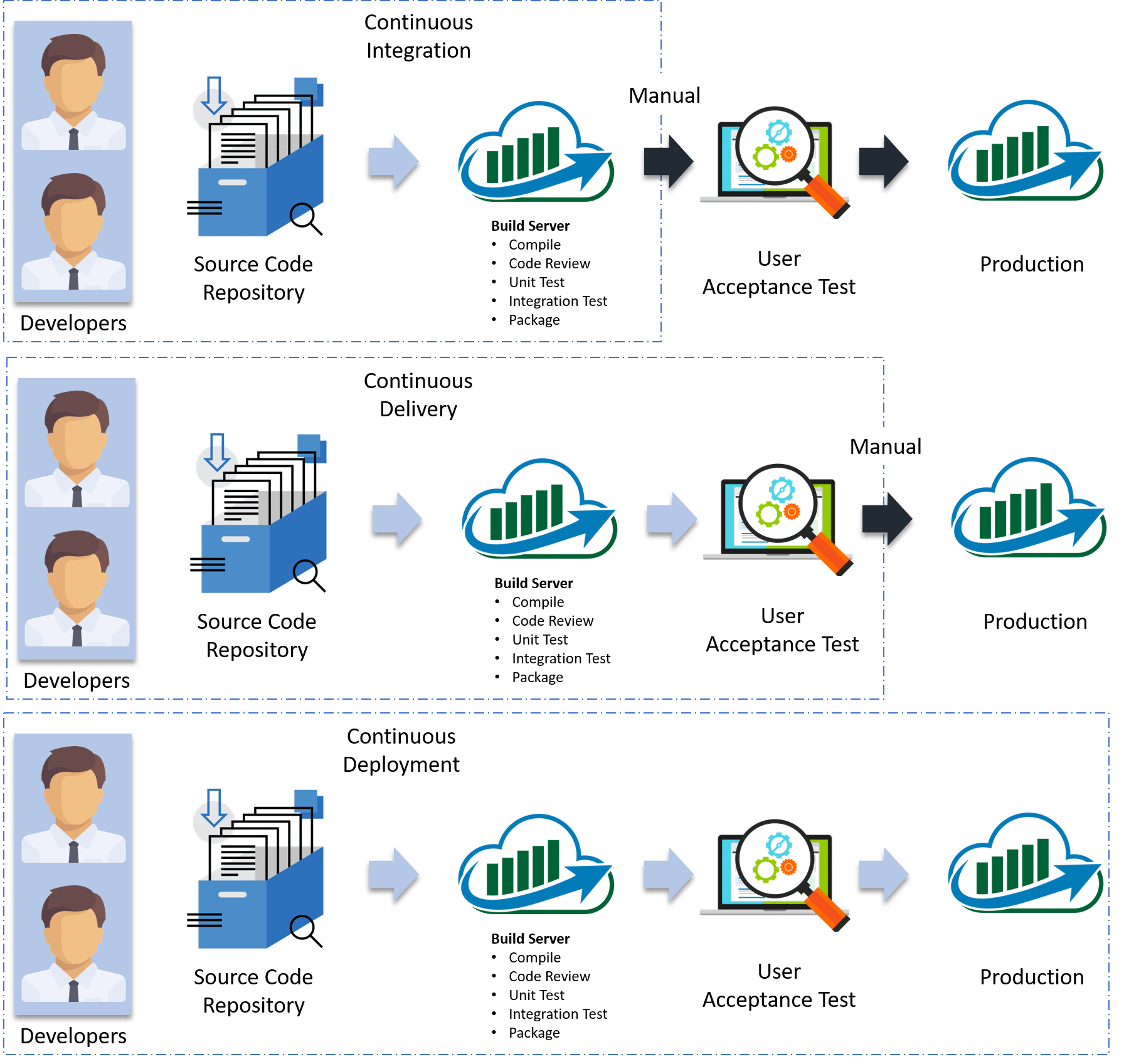

DevOps Tools - Jenkins CI/CD
What is Jenkins?
 Jenkins is an open source automation tool written in Java with plugins built for Continuous Integration purpose. Jenkins is used to build and test your software projects continuously making it easier for developers to integrate changes to the project, and making it easier for users to obtain a fresh build. It also allows you to continuously deliver your software by integrating with a large number of testing and deployment technologies.
Jenkins is an open source automation tool written in Java with plugins built for Continuous Integration purpose. Jenkins is used to build and test your software projects continuously making it easier for developers to integrate changes to the project, and making it easier for users to obtain a fresh build. It also allows you to continuously deliver your software by integrating with a large number of testing and deployment technologies.
With Jenkins, organizations can accelerate the software development process through automation. Jenkins integrates development life-cycle processes of all kinds, including build, document, test, package, stage, deploy, static analysis and much more.
Jenkins achieves Continuous Integration with the help of plugins. Plugins allows the integration of Various DevOps stages. If you want to integrate a particular tool, you need to install the plugins for that tool. For example: Git, Maven 2 project, Amazon EC2, HTML publisher etc.
Advantages of Jenkins include:
- It is an open source tool with great community support.
- It is easy to install.
- It has 1000+ plugins to ease your work. If a plugin does not exist, you can code it and share with the community.
- It is free of cost.
- It is built with Java and hence, it is portable to all the major platforms.
There are certain things about Jenkins that separates it from other the Continuous Integration tool. Let us take a look on those points.
Following are some facts about Jenkins that makes it better than other Continuous Integration tools:
- Adoption: Jenkins is widespread, with more than 147,000 active installations and over 1 million users around the world.
- Plugins: Jenkins is interconnected with well over 1,000 plugins that allow it to integrate with most of the development, testing and deployment tools.
It is evident from the above points that Jenkins has a very high demand globally. Before we dive into Jenkins it is important to know what is Continuous Integration and why it was introduced.
What is Continuous Integration?
Continuous Integration is a development practice in which the developers are required to commit changes to the source code in a shared repository several times a day or more frequently. Every commit made in the repository is then built. This allows the teams to detect the problems early. Apart from this, depending on the Continuous Integration tool, there are several other functions like deploying the build application on the test server, providing the concerned teams with the build and test results etc.
What are Continuous Integration, Delivery, and Deployment
Visual content reaches an individual's brain in a faster and more understandable way than textual information. So I am going to start with a diagram which clearly explains the difference:

In Continuous Integration, every code commit is built and tested, but, is not in a condition to be released. I mean the build application is not automatically deployed on the test servers in order to validate it using different types of Blackbox testing like - User Acceptance Testing (UAT).
In Continuous Delivery, the application is continuously deployed on the test servers for UAT. Or, you can say the application is ready to be released to production anytime. So, obviously Continuous Integration is necessary for Continuous Delivery.
Continuous Deployment is the next step past Continuous Delivery, where you are not just creating a deployable package, but you are actually deploying it in an automated fashion.
Let me summarize the differences using a table:
In simple terms, Continuous Integration is a part of both Continuous Delivery and Continuous Deployment. And Continuous Deployment is like Continuous Delivery, except that releases happen automatically.
Select the language of your preference